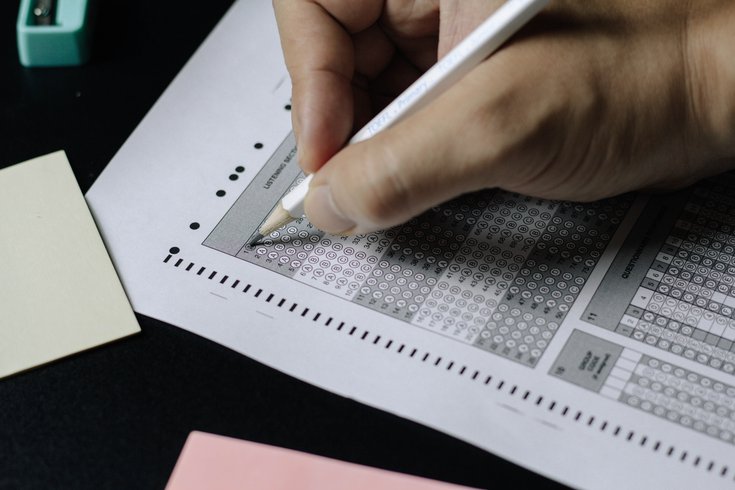
November 29, 2022
 Nguyen Dang Hoang Nhu/Unsplash
Nguyen Dang Hoang Nhu/Unsplash
Pennsylvania's standardized test scores for 2022 have not reached pre-pandemic levels, according to data released by the state Department of Education on Monday. Some scores have increased from 2021, but all nearly all remain below scores in 2019.
As schools across the country continue to recover from the COVID-19 pandemic's impact on student performance and learning, Pennsylvania's standardized test scores have yet to return to pre-pandemic levels, data from the Department of Education revealed Monday.
Scores for the Pennsylvania State Standard Assessments, or PSSAs, which are administered to students in grades three through eight and examine proficiency in math, English, and science, saw declines in 2021 after a full year of remote learning. The state skipped standardized testing in 2020 as students are required to take statewide exams in person.
"Student performance is generally improving year-over-year and schools across Pennsylvania are working overtime to accelerate learning and meet students where they are at as we emerge from the pandemic," Acting Secretary of Education Eric Hagarty said. "We know that assessments show point-in-time data that does not reflect the full scope of learning happening in classrooms across the commonwealth, and we expect student performance will continue to improve as students and educators proceed with a more normalized, uninterrupted year of in-person learning."
Data from 2022 shows continued decreases in English scores among students in grades three through six, and increases in higher grades. Math scores increased across most grade levels, but scores remain below pre-pandemic levels. Science scores fell slightly among fourth grade students and rose slightly for eighth graders, but remain below 2019 levels.
Fourth grade students across Pennsylvania's public schools saw increases in math scores on the PSSA, with 42.3% of students scoring proficient or higher on the statewide exam. That number was up slightly from 35.6% in 2021, but down from 46.2% in 2019.
Still, fourth graders continued to see decreases in scores in other subjects, with just 52.2% of students scoring proficient or above in English compared to 63.6% in 2019, and 73.7% of students scoring proficient or above in science, compared to 77.8% in 2019.
Eighth grade students saw increases in math and English scores on the PSSA, with 22.6% of students scoring proficient or higher in math compared with 22.1% in 2021. That number is down from 32.2% in 2019. In English, 55.6% of eighth grades scored proficient or higher compared to 52.6% in 2021 and 57.9% in 2019.
The middle school students saw an increase in science scores, with 51.1% of students scoring at least proficient. That is up from 50.8% in 2021, but down from 58.2% in 2019.
The Keystone Exams, which were administered to 11th grade students to determine proficiency in algebra, biology and literature, were among those that did not see significant declines in scores between 2019 and 2021. The biology section of the Keystone Exam was the sole subject to see a score increase during what state officials call the "pandemic year," as schools operated on a hybrid schedule and many parts of the state saw routine closures due to pandemic surges.
Algebra scores on this year's Keystone Exam barely exceeded pre-pandemic levels, with 63.9% of students scoring proficient or advanced compared to 63.3% in 2019. Literature scores have yet to reach 2019 levels, but rebounded dramatically from 49.6% to 64.9% between 2021 and 2022.
Biology scores on this year's Keystone exam were lower than in 2021, with 41.9% of students reaching the proficient or advanced level compared to 67.6% in 2021 and 63.2% in 2019.
Parents can check how their child's school and school district fared using the state's Future Ready Index, a reporting system that evaluates schools based on assessment results, college readiness, English language acquisition, access to advanced coursework, attendance, participation and other achievement data.
The index includes a searchable tool that allows parents to assess whether the schools in their community are on track and meeting performance standards set by the state. It also includes demographic information such as the percentage of economically disadvantaged students, enrollment by race and gender and the percentage of gifted students.
Parents are able to compare schools within each school district, and examine how student performance and career readiness has changed over the past several academic years. Parents and families can also track what percentage of students and which schools are on track to reach the state's 2030 goals of reducing the number of students not reaching assessment, language attainment and career readiness targets.
Pennsylvania is not the only state grappling the effects of the pandemic in student learning. In September, results from the National Assessment of Educational Progress — an exam that evaluates thousands of children across the country and is overseen by researchers from the U.S. Department of Education — found that 9-year-olds saw declines in math and reading scores not seen since the 1970s.
While national declines were seen across nearly all age levels and demographics, test score declines were felt more heavily among students of color and those in high-poverty schools.
Concerns over the length of time students spent learning from home, coupled with stark test results from the pandemic school year, led to a movement by Pennsylvania legislators calling on school officials to help close the pandemic learning gap.
"The proof is clear," Rep. Bryan Cutler told PennLive when the 2021 results were announced. "The learning loss our children have experienced, by no fault of their own, is immense and very real. The pressure is now on teachers, administrators, parents and other school leaders to work together with policymakers to solve this crisis and close the gaps. We owe it to our children."